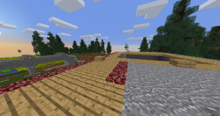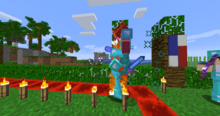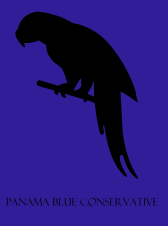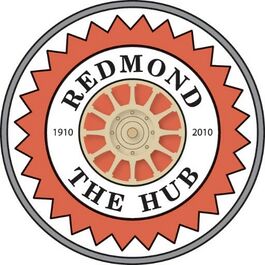Panama (Nova): Difference between revisions
>HouseOfMarlborough (Adding categories) |
>HouseOfMarlborough (Adding categories) |
(No difference)
| |
Revision as of 09:01, 28 February 2019
Panama
Panama is an oligarchical republic located in Central America and the Caribbean. The nation went into planning in early October and was officially founded on November 12, 2018. The nation is an oligarchical republic with a constitution that outlines a three branch government, including a bicameral parliament with an elected and unelected chamber. The nation has territory from the Galapagos to the Yucatan, with territories sprawling across South America, Central America, and the Caribbean. The nation's values are that of neutrality, germanism, and extensive trade. Despite neutrality the nation takes a relatively active position in world affairs, with formal notable relations with 8 separate nations.
The nation was planned in early October and had towns established throughout early November. The nation itself was only made in mid-November and quickly became a regional power. Many attempts by new players to colonize the region were repelled by the Panama Marines, the governmental military police. A brief war was fought with Wabanaki known as the Ten Apple War, with a treaty signed after 2 days. Panama continued to grow in strength and developed important infrastructure.
History
Early History
Planning
After radius for nations were announced, the original plans for Papacy World Wide (PWW) were scrapped entirely, since it would be entirely impossible for a globalist nation to succeed. Interest at that time had died out anyway. Spontaneously, Oretin and Paper both came up with the idea of settling in Panama, and Paper insisted it should be a republic. Thus the Panama Republic was born, and quickly organized early on with a discord. Ian, who was already moving to the region with plans in Cuba (to join Wabanaki) also decided to join Panama. Over the course of 10 days a constitution was written up by all the Oligarquia and signed. Thus lay the foundations of Panama, and soon after two major issues sprung up: When would the first Presidente be elected (prior to the election both Paper and Oretin were considered interim Presidente), and would the lower house exist?
November Election
The November Election was the first election in Panama history, where two key issues were decided. The first was that the lower house of Parliament would not be voted on until mid December. The second was that the Presidente would be elected in mid October and hold power until the end of November. The election for Presidente was between candidates Oretin, Paper, Schober, and Runner, with Paper winning the majority of votes and thus being inaugurated as first Presidente of Panama, Oretin placing in second, and Runner and Schober tying for third place. Afterwards a cabinet was quickly made with Jaden being made Minister of Foreign Affairs, Oretin Minister of Trade, and Schober Minister of War. It also meant the PBC would run Panama.
Early Establishment
The starting of Terra Nova proved far better than expected. All worries of several groups moving to Panama dissipated relatively quickly, as significant talks occurred with these groups before TN arrived to hopefully prevent it. It went far better than anyone in Panama expected. The towns were quickly established, with first Avalon, then Havana in early access, then Lawyer Island, New Ulm, Tortuga, and eventually New Graz. The independent towns of Tikal and Narnia were also brought into Panama soon after, among others. Overall things went very well.
The Cuban Migration
Roughly 10 days after Terra Nova large amounts of people began arriving on Cuban shores to dig clay, must to the discontent of Panama, especially Cuban officials. Moves to securely claim the island were put in place. A random town was also established at the south end of the island, but was scared away. On the 11th of November around 4 new individuals attempted to settle the Northern Marshes of Cuba, wherein a ragtag militia of Panamanians slaughtered them all, securing the island. This was known as the Marsh Massacre.
The Ten Apple War
Prelude
In a series of events leading up to organized conflict, several members of Wabanaki and Panama ended up intertwined in conflicts. The full story is hard to come by due to extreme bias, the TBI has a relatively good story on it and the wikia page linked here also has a fairly good explanation, but in a Panamanian perspective it was seen as hostile aggression at the time and most Panamanians still see it as such today, so that is the perspective Panama had leading into the war. This led to the further escalation of the crisis and eventually a declaration of war.
Siege of the East
After several skirmishes and a minor raid into South a significant Panamanian army marched to Iroquois's capital, East, with the intent to construct a massive Fort, known as Fort I LOVE LLAMAS, largely because the breaking point for the war was the construction of a Wabanaki fort on Panamanian land. Another fort was also made earlier that day in that location. When the army arrived, minor fighting occurred on the bridge while significant griefing happened all around the capital. Little came of the battle except massive damage to the Iroquois capital that would take a large time to fix. Shortly after the Siege of the East Italia and Byzantium formally joined the war with Panama, and the rebels in California supported them. Peace talks were held shortly afterwards and lasted 2 hours before breaking down.
Battle of the South
The most climactic battle of the war occurred shortly before it's conclusion. Initially it was meant to be a small raid, with a massive, ugly fortress being made near the Comanche capital since the other was claimed, with 2 Panamanian soldiers and 1 Byzantine soldier taking party. This changed fairly quickly however as Wabanaki soldiers began to respond and large amounts of Panamanians and Panamanian allies began to flood in. The battle lasted roughly 30 minutes and Wabanaki took significant casualties, roughly 7-4 casualties total on each side not counting unarmed individuals. Eventually the battle waned on a very long time and both the bulk of the Wabanaki army and the Panamanian army left the scene, with Wabanaki arriving later and destroying Fort Runner.
Peace Talks
Once again peace talks were held later that evening. Few expected it to go well, and the talks started off extremely hostile. Eventually the hardliners left the talks and the talking was primarily between Presidente Paper, Juez IanNotEN, occasionally Chief David, and Hoyenah Yoda. The talks were productive and were able to solve most of the major irreconcilable issues, many by loosely blanketing them or ignoring them to solve the larger problems at hand. Eventually a treaty was signed up and delivered to Wabanaki, where they voted yes and peace was made. There was a cease-fire during the talks as well.
Twilight of Paper's Presidency
Expansion of Infrastructure and the CDD
Panamanian expansion had gotten huge by the time of late November. As a result major changes had to be made. Panama commissioned the CDD (lower chamber of parliament) elections despite the constitution giving a month before requiring the CDD be put in place. As such many candidates began to run for position as Delegar. Panamanian infrastructure also rapidly improved, with a complex nether system connecting nearly every town, and a railway system being built. The South Railway intended to connect Panama City, New Ulm, Lawyer Island, Quito, and the Galapagos Isle. The rail was finished in two days, and on the same day it was finished a Panama-Avalon rail was complete. Thus it was possible to go from Havana to the Galapagos by railway. The turtle industry, championed by OPEC as a massive source of income, was then crashed by foreign sellers, leading to a mass selling of eggs for cheap.
Organized Crime
As Panama began to grow in size, organized crime syndicates began to pose a greater threat in the nation. Initially organized crime was largely in the far out areas of the nation, however one poorer city in the Panamanian core, Tropisch, began to become a center of illegal activity. Eventually it's leader and political Oligarquia, SmileySkeleton, began known as the Godfather of the Panama Mafia, a title ignored initially by the Panamanian leadership. However, after a foreign dispute where Panamanian racketeering in Britain disrupted local affairs there, and when the Mafia tried to expand into the nationalized railroad industry of Panama, Presidente Paper took stand and declared war on the Mafia and it's primary activity: drugs. Panama Marines began kicking down doors and arresting members of the Panamanian Mafia all over the Panamanian mainland where executive jurisdiction was strong. The Mafia was brutally suppressed, with several Mafia members being slaughtered in the Church of Tropisch. Roughly 15 Mafia members were slaughtered in what became known as the "Mafia Massacre". This effectively destroyed the Mafia and Skeleton surrendered to the Panama Marines. In the chaos the Panaloa Cartel was able to take over the trade of fire cocaine, a rare drug produced largely on Lawyer Island. The government immediately cracked down on Panaloa and invaded lawyer island, the supposed headquarters of the new group after leaving hiding the destroy a rival french drug farm, runnerboy the supposed leader of Panaloa was cornered by the government. A series of chases and fights ensued which led to the assassination of the captain of the Panama Marines and runnerboy claiming to not be part of Panaloa. Panaloan activites subsided to an extent afterwards, though the government was mostly ambivalent to it so long as it remained quiet, with the Mafia being ignored until it got too powerful.
Election, Secession, and Intrigue
The time leading up to the election saw a significant amount of intrigue as two cohesive units began to form in the core territory, West Panama and East Panama. Shortly afterwards, the State of Ecuador declared independence, and despite minor hiccups with some towns not wanting to leave Panama, the two nations split very quickly and effectively and became closer partners. Meanwhile drug tensions continued as a Panama Mafia church in Eastern Panama was closed down by the PBC led Panama Marines in order to prevent drug trafficking. This caused an uproar wherein Panaloa and the Panama Mafia in a rare show of cooperation together spoke out against the situation. This disrupted the traditional situation wherein the Mafia had influence over the West while Panaloa controlled the East. However it only led to minor violence against canal workers as both organizations tried to claim it for themselves. The West of Panama, with a far larger population but larger poverty rate, began to organize itself into civilian organizations. One such group was New Graz's WSC, or White Safety Coalition, an organization devoted to the protection of the Austrian people of Panama. The WSC and PBC also have alleged ties. In the midst of all this the election itself had finally begun, with the massive Oretin campaign propelling itself far beyond the others. The results of the election was a clear victory for Oretin, winning 78.9% of the vote.
Oretin Administration
Sectionalism
Oretin's rise into office was a great uniting factor, tying the entire nation of Panama together. However, problems began to emerge internally. The growing Panama Drug War highlighted the key economic divide between East and West Panama, which soon developed a massive rivalry. The West was far poorer than the East, which would periodically raid and pillage the East in one hand and give foreign aid on the other. This worsened when religious divides began to appear, as the East was a mix of Wokist and Sansist Christian, whereas the West remained predominantly Muslim. In a major battle, Panaloa teamed with the Panama Mafia and launched a gang invasion of Western Panama cities, and the Panama Marines were nowhere in sight to stop the attack. The MS-13 gang won a massive victory against the East in defeating Panama Mafia member Paper, however a foreign fighter was killed while trying to defend New Graz from the Panama Mafia, named DrBubonic. He would later join the Mafia. Sporadic violence remained common, though almost paradoxically East-West trade remained.
Government
Panama is an oligarchical republic that has three branches of government, a bicameral legislature, an executive branch, and a unitary judiciary. The following branches work together through Checks and Balances, with Fusion of Powers being unheard of in Panama. The nation has a strict constitution that must be adhered to, with the three branches all acting as works of it.
Legislative
The Legislative Branch is made up by a single Parliament. This is bicameral, meaning it is made up of two parts, an upper and lower house. The upper house is made up of unelected Oligarquia, while the lower house is made up of civilians.
Casa de Delegados
The Casa de Delegados is the lower house of the Parliament. The Delegars (Delegates) are elected once every two months on the 15th. Delegars are responsible for proposing propositions into #propositions. This can be a wide variety of things, usually a Bill (which becomes a law) or an Issue (which is brought to the executive). Delegars then vote among themselves in their chamber, and all passed votes will be brought to the Casa de Oligarquia
Casa de Oligarquia
The CDO is the upper house of Parliament. The Oligarquia (Oligarchs) are unelected officials that manage the house. All votes from the CDD end up in the CDO, where a vote is held on whether to pass or fail the proposition There are cases in Panama, such as when it first started, where the CDO is sovereign over the constitution, a time known as a "Time of Crisis," in order to better control the nation in a practical manner.
Executive
Presidente
Presidente is the head of state and head of government of the Panama Republic. They symbolize the nation abroad and have a series of important responsibilities. They are elected monthly on the last day of each month, and require a simple majority to be elected. The Presidente has very specific duties meaning they are the position most bound to the constitution and thus subject to the judiciary. They may not serve longer than 2 terms. If the judiciary finds that the Presidente violated the constitution, a Vote of No Confidence would only require 10% from the CDD and CDO to impeach them. The Presient may also form a cabinet to help them run the nation.
Judiciary
Corte Suprema
The Supreme Court of Panama is a constitutional court responsible for interpreting all laws and actions of all other members of government as constitutional. If something is ruled unconstitutional, they are able to either strike it down entirely, or force it to be voted on again to be maintained. As such they are in a sense the most powerful position. They also manage the elections and documents.
Buildings
National Projects
Panama Canal
The Panama Canal is a national works project dedicated to fulfilling the real life Panama Canal niche. The actual digging has been finished, however work needs to be done to clear out the trees and dig deeper.
Southern Railway
The Southern Railway is a railroad that connects the cities of Panama City, Lawyer Island, Quito, and the Galapagos Isle. The railway is nearly complete and has so far reached up to Quito, with installments on the Quito-Galapagos railway pending. The railway is an alternative to nether travel that is traditionally used in Panama between most major cities due to the lack of permanence in the nether, and is a source of interconnection across the nation with each other and the capital.
Political Parties
The following are the active political parties in Panama, and significant voter b
Panama Blue Conservatives (PBC)
Manifesto
The PBC party is a party dedicated to a nine step plan that has been loosely followed during the paper presidency. The Manifesto of the PBC includes a nine step plan that goes as followed:
- Independence for panama
- Improvement of infrastructure, prioritizing the canal
- Minimizing constitutional revision
- Free society
- No territorial expansion
- No war
- No entangling agreements
- A strong central government
- Total uncompromising neutrality
History
Under the Paper administration, the first one in PBC and Panama history, the plan was dubiously followed, much to the dismay of the more conservative Oretin. Several points, such as no territorial expansion and free society, were effectively ignored with large swaths of land being initiated under the Paper administration (Hispaniola, Belize, Maracaibo, Galapagos, etc) going past even the PBC's limit on initiation. Despite that the PBC still remains by far the most conservative force in Panama, acting nervous about any further expansion and consistently pushing for full neutrality and independence, while avoiding diplomatic intrigue. The PBC continued to grow, however a minor internal split occurred on how strict territorial entry should be. Acting Presidente Paper admitted a significant amount of land, much to the chagrin of Coleader of the party Oretin. The war was supported by all parties in Panama, however it was largely the PBC's efforts to make peace that delayed it's start. When that failed with no hesitation a unanimous vote was held and the war began, with the PBC gaining wartime popularity. The war was very brief and shortly afterwards politics quieted down.
National Panama Party (NPP)
Manifesto
The NPP is the other major party of Panama as of now, however sees less support as currently the only member of it is runner. The political center of the party if Lawyer Island. The NPP is an ultranationalist party that pushes for massive territorial expansion, war, and antagonism. It has received numerous criticisms for being racist.
History
Candidate runner ran in the November Election however was unable to win the majority. As such the NPP became an opposition party. Due to the Casa De Delegars not being formed yet, the NPP was mostly active in the Casa de Oligarquia, voting no on several PBC minded policies. The NPP also held a rally at Lawyer Island, attended by the Presidente and several important figures in Panama. The rally was highly successful in rallying voters for the NPP, though sparked major criticisms from the left of extreme xenophobia. Eventually the NPP's opposition to the current administration began to fade, and by late September party leader Runner endorsed Oretin for the Presidency.
The Political Left
Manifesto
The Left of Panama is not politically organized into any party. However Ian is generally considered the liberal leader of Panama. The Left of Panama is a very strong force in the nation despite not being politically organized and would likely become the largest party overnight. The following are generally considered leftist views, based off of statements made in the first Presidential debate. The first is a more aggressive foreign policy, with more influence in world affairs and entering into important worldwide agreements. Secondly a leftist in Panama would likely want territorial expansion, ironically making them more likely to work with the NPP than the PBC. Total neutrality is not considered practical by the Political Left and more liberal reforms of the constitution. Generally speaking they favor expansion more than the PBC and as much as the NPP, with it being the most major issue.
History
Leftist involvement in Panama has historically dated back to the November election campaigns, wherein a new viewpoint regarding territorial expansion that reached a middle ground between NPP extremism and PBC isolationism and was highly favored within the nation. This issue was the main drive of the political left, and in early November the left would push Presidente Paper to continue adding new territories, an action the Presidente didn't particularly want but was eventually swayed into doing. Leftist influence could be argued to have championed Panamanian volunteers overseas to help foreign nations independently, however it's unclear whether this was Leftist influence or a general consensus. The Left and the PBC were in total alignment on declaring the Ten Apple War, with both championing negotiation until fail. Leftist demands were somewhat more significant than PBC demands but a strong middle ground formed the basis of the Ten Apple Treaty. Shortly afterwards politics became relatively quiet.
Pandemonium Party (PP)
Manifesto
The PP is a party that saw great activity in the November election but has since faded away. The leader of the party is Schober. The PP is often considered a more extreme version of the NPP, with the slogan of the party being "LET CHAOS FUCKING REIGN." They want a relatively decentralized Panama government and a very loose way of administering the nation, reminiscent of older German administration. They are similar to the NPP in other regards.
History
During the November Election the PP was the most significant contender for the Presidency besides the PBC. The PP was very outspoken against PBC policies as well, with the majority of the actual debate being between the PBC and PP. After the election party leader Schober was made Minister of War, being the only PP member in the cabinet. After this the PP slowly began to fade as opposition, with the NPP taking it's place as the primary opposition against PBC rule.
Organized Crime
Organized Crime refers to the multitude of organizations across Panama that perpetuate crime.
Panama Mafia
The Panama Mafia is the oldest organization in Panama devoted to crime.
MS-13
Panaloa Cartel
Galapagoan Cartel
Notable People
- paper
- oretin
- iannoten
- 73beetle
- schober
- beltira
- mkle
- jadenjumbo
- jmills
- VENTUS
- Jacob8858
- generalrhombus



